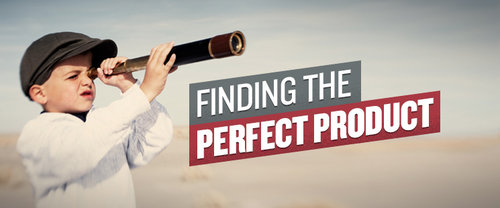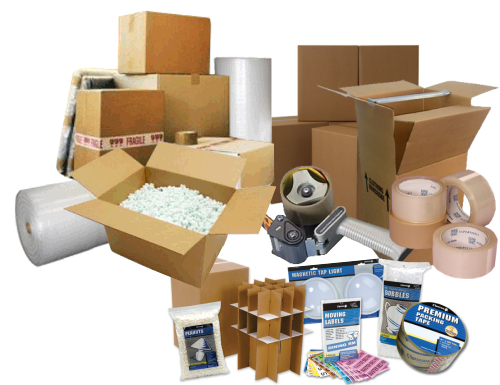7 Steps To Setup Your eBay Business
Thinking about getting started with a full on eBay business, but don’t know where to start? You’re not alone. Setting up a business on eBay takes time, effort, and the tips in this post. Don’t fall into the belief that you can just magically start up a store on eBay and BOOM!, you’re rich. Sorry to be the one to burst your bubble but it just doesn’t work like that.
I made a ton of mistakes when I got started with eBay because I barely did any research and just jumped right in. I want to help you avoid those mistakes I made that cost me a lot of time and money, so that you’ll be in a much better position to succeed. Follow these 10 steps to setup your eBay business like a BOSS.
1: Decide what you’re going to sell
The very first thing you need to do is decide what exactly you plan on selling. Are you going to be the online retailer that offers a bunch of different stuff, or will you specialize in a particular niche? This is important because it will direct the rest of the way you carry out your eBay business. Neither method is better or worse than the other, they’re just different.
By selling a variety of items, you’ll probably get a higher volume of sales and have a steady flow of products going out. If one product isn’t selling very well, you can cut it and the sales from your other products will be able to make up for the loss. The disadvantage is it will be more expensive to run because you’ll have to buy so many different products. Also, you could have a lot of wasted stock if your stuff doesn’t sell well enough.
If you go with a narrow niche, or sell one product (iPhone chargers for example), your costs will be lower, and you will become the “go-to” seller for that particular product. The downside is that if people stop buying that item or lose interest, you’ll feel the effects quickly. Basically your entire business is relying on people to buy one product.
I’ve done both methods and I personally prefer to narrow it down to a niche. That’s mainly because it’s easier to manage and not as big of a headache. I absolutely hated doing inventory of 20+ different products/skus.
2: Start researching suppliers
Next, you’ll want to make sure you’ll have somewhere RELIABLE to get your product. Shamless plug here, but you can always check out my eBay Product Sourcing guide for ideas on where to find suppliers.
The key point to take from this step is to find a RELIABLE supplier that’s CONSISTENT. Hopefully your business will do well enough that you’ll be reordering on a regular basis, so your supplier will be absolutely crucial for your eBay business. If they’re unable to ship your products on time, or they start sending you garbage products, it can ruin your business.
You’ll notice that most sellers never reveal their suppliers once they find a good one. That’s done on purpose. By keeping their suppliers a secret, it keeps their competition to a minimum. So once you find a good supplier that you can trust, keep them in your rolodex because they will become your best friend.
3: Come up with a company/store name
What will you call yourself? Put some thought into what you want to name your business. The reason I put company/store name is because I highly recommend registering an actual business name (LLC or Sole Proprietorship). If you plan on buying from a wholesaler, they’re going to require a business ID, at least if they’re REAL wholesalers. The costs to register a business are different depending on where you live, but a lot of states are around $100 which isn’t bad at all.
Remember step 1 when you decided whether you should sell a variety of products or specialize in one niche? That’s going to come in handy now. If you’re selling a variety of products, you don’t want to name your store anything too specific like “Roy’s Fishing Reels”. You’ll need a more broad name like “Roy’s World”.
My last tip is to make it something brandable. That’s one of the things I did right when I started my eBay business. I picked a brandable name, registered the domain name, Twitter handle, and Facebook page under the domain name. That gave me multiple marketing channels to use. If possible, I suggest you do the same, especially the domain name. If your eBay store takes off, you can eventually open up your own e-commerce site and have larger profits by not having to deal with eBay.
4: Create your eBay Store
Pretty self explanatory. Just go through eBay and create an account. Some people like to start out just selling individually rather than a store. But I say open up a store right off the bat. If you’re going to be selling seriously on eBay, you need a store. You’ll save on fees and get all of the benefits of having an eBay store.
If you don’t know how to start a store, here’s everything you need to know. And of course, you’re going to need a PayPal account too.
5: Order your products
Now that you have everything setup, it’s time to get some products in. Don’t go off and place a $10,000 order right away. You have no idea whether or not your products are going to sell yet. Start small and as your business grows, increase your order size. My first eBay store was selling T-shirts, so I ordered the minimum amount of each design I could. Side note: If you’ve never sold on eBay before, don’t start with T-Shirts. This was a huge mistake on my part.
I can’t tell you how much you should spend on your first order because it will depend on what you’re selling and how much you feel comfortable spending. With my T-Shirts (I also sold some other small trinkets), my first order was over $1,000. A lot of people recommend doing a test order first to test the quality of the product. I didn’t do this the first time around because I bought from an American supplier. But later on when I started getting products from overseas, you can bet your ass that I got a sample product before I ordered anything new.
Place your order and make sure that you keep records of all of your expenses. If you’re buying from multiple suppliers, make sure you have detailed records of what you bought from which supplier. And also track how many of each product you’re supposed to be getting. I made a spreadsheet in Excel where I tracked everything down, and kept every invoice and receipt in an organizer like this one. I’m telling you, organization is soooooooooo important. You will regret it if you don’t.
Once you receive all of your products, make sure you take inventory as soon as it arrives. If you’re missing anything, contact your supplier immediately to let them know.
6: Get your shipping materials
Now that you have all of your products and can physically see the size of them, start ordering your shipping supplies and any miscellaneous things you’re going to need. This is another area I messed up in.
For instance, I stupidly didn’t account for the fact that some people would be placing large orders. So the bags I got to ship the shirts in would fit 3 shirts in them at the most. So when people started to order 5, 6, or 7 shirts, I was going to Walmart to buy something to ship them in. This added some unnecessary costs for me.
So depending on what you’re selling, make sure you get a variety of shipping boxes/bags. Here’s a pretty short list of shipping materials you’ll probably need:
- Shipping boxes (from USPS or eBay)
- A tape gun (trust me, you need a tape gun, not just a roll of tape)
- Packing peanuts and bubble wrap (depending on what you’re selling)
- Thermal label printer (the best money I ever spent. This DYMO one is awesome)
- Shipping scale
Those are the basic supplies you’re going to need to start shipping out your products. Make sure you get a variety of sized boxes to accommodate the different sized orders you might get. After a while, you’ll get a good idea of what sizes work best. Another place you can get shipping boxes from is Uline. If you plan on ordering a ton of them, you can probably save money by buying them from Uline.
7: Open up shop!
That’s pretty much everything you need to setup your eBay business. The next step will be actually listing your items, taking pics, etc. Make sure you read my post on How To Create an eBay Listing That Sells for a complete walk-through on how to create eBay listings.
Have any questions about setting up your eBay business? Drop a comment below!






